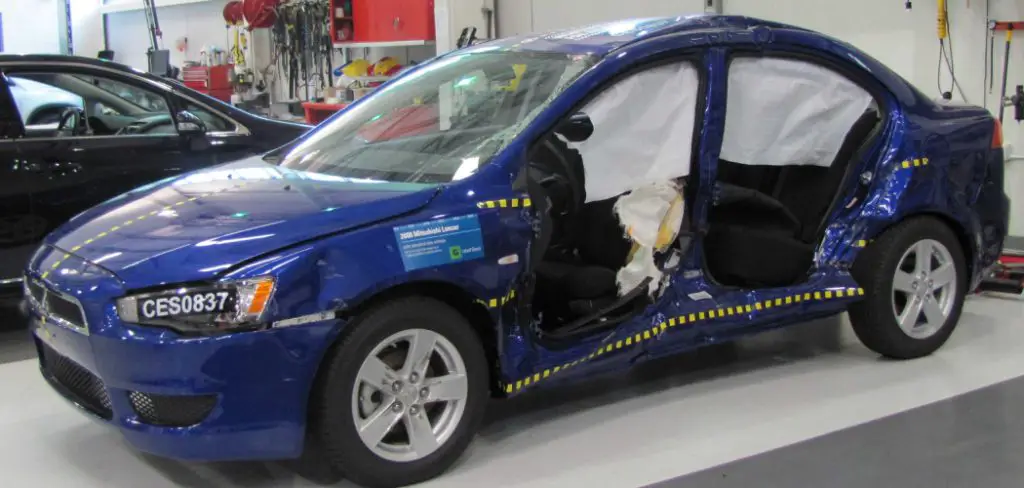Airbags are one of the most important safety features in modern vehicles, designed to protect passengers during collisions by cushioning the impact. Ensuring that your airbags are functional is crucial for your safety on the road.

While airbags are built to last and work reliably, regular maintenance and checks can help identify potential issues before they become critical. This guide will walk you through the basics of how to check if airbags work.
Understanding How Airbags Work
Airbags operate through a sophisticated system of sensors and rapid deployment mechanisms designed to react in milliseconds during a collision. When a crash occurs, sensors in the vehicle detect the sudden deceleration and send a signal to the airbag control unit. This triggers an inflator that rapidly fills the airbag with gas, causing it to expand and deploy.
The entire process happens almost instantaneously, creating a cushion that helps reduce the impact on passengers. Airbags are typically made from a lightweight, durable fabric that is designed to withstand the rapid inflation and deflation process without tearing. Understanding this mechanism highlights the importance of ensuring all components of the airbag system, including sensors and wiring, are in optimal working condition.
Signs Your Airbags Might Not Be Working
Ensuring your airbags are functioning correctly is vital for your safety. Here are some common signs that your airbag system might not be working properly:
- Airbag Warning Light – If the airbag warning light on your dashboard remains illuminated or flashes, it usually indicates an issue with the system that requires immediate attention.
- Damaged or Worn Components – Visible damage to the dashboard, steering wheel, or airbag covers may suggest the system has been tampered with or compromised.
- Recent Vehicle Accidents – If your vehicle was recently involved in a collision and the airbags did not deploy, it could indicate a malfunction or that the airbags need replacement.
- Faulty Sensors or Wiring – Problems within the sensor or wiring system, which may occur due to wear and tear, can impair the communication between the components, leading to potential failure.
- Unusual Noises or Malfunctions – Clicking or other unusual sounds from the steering column or dashboard may signal issues with the airbag deployment mechanism.
If you notice any of these signs, it is recommended to have your airbag system inspected and repaired by a qualified technician to ensure your safety on the road.
10 Methods How to Check if Airbags Work
1. Observe the Airbag Warning Light on the Dashboard
The simplest and most immediate method to check if your vehicle’s airbags are functioning is to observe the airbag warning light, often labeled as “SRS” (Supplemental Restraint System) or represented by an icon of a person with a circular airbag. When you first turn the ignition key to the “ON” position, the light should briefly illuminate for a few seconds as the system performs a self-check. A properly functioning system will see the light turn off afterward.

If the light stays on, blinks repeatedly, or does not come on at all, that’s a strong indicator something is wrong with the airbag system. This self-diagnostic process is your vehicle’s way of signaling whether the system is armed and operational or needs attention.
2. Use an OBD-II Scanner with SRS Diagnostic Capability
For a more technical and precise assessment, use an OBD-II scanner that includes SRS diagnostics. Plug the scanner into your vehicle’s OBD-II port—usually found under the dashboard on the driver’s side. With the ignition in the ON position, run a diagnostic scan that checks the airbag module.
The scanner will display any trouble codes (DTCs) related to the airbag system, such as sensor faults, clock spring issues, or module communication errors. Advanced scanners will also show live data, allowing you to confirm that all sensors and control modules are responding properly. This is a crucial step for deeper verification, especially after a collision repair or airbag replacement.
3. Verify Presence and Integrity of Airbag Components
Physically inspecting the airbag system is essential, especially in older or second-hand vehicles where airbags may have been previously deployed or tampered with. Begin by examining areas like the steering wheel, dashboard, seat sides, and A-pillars—locations where airbags are commonly installed.
Make sure the airbag covers are intact, sealed, and labeled with “SRS Airbag” or equivalent markings. Check for any signs of tampering, such as loose panels, mismatched covers, or evidence of re-glued dashboard sections. If a deployed airbag has been improperly replaced with a cover or filler without a functioning module underneath, it won’t protect you in a crash—even if the warning light is off.
4. Inspect Seat Belt Pretensioner Functionality
Seat belt pretensioners work in conjunction with airbags and can be a strong indicator of system integrity. When the SRS system is compromised or deployed, the seat belt pretensioners will often lock or retract as part of the event. If your seat belts feel stiff, locked in place, or do not retract smoothly, this may indicate a past deployment or malfunction.

Additionally, if the seatbelt warning light remains on or flashes despite seatbelts being fastened, there may be a fault in the system. Functional pretensioners typically suggest that the supporting components of the SRS system are still intact and operational.
5. Check the Airbag Control Module (ACM) for Fault Codes
The Airbag Control Module is the brain of the entire airbag system, monitoring sensors and triggering deployment during a crash. If it becomes damaged, corrupted, or stores crash data from a previous accident, it may disable the airbag system entirely. Using your OBD-II scanner, retrieve any stored data or crash codes from the ACM.
Some codes will lock the system until the module is reset or replaced. If the control module has been reset but underlying problems persist, such as disconnected sensors or replaced airbags not recognized by the system, the airbag light may remain on. Proper communication with the ACM is crucial to ensuring full airbag system functionality.
6. Test Occupant Detection Sensors in Passenger Seats
Modern airbag systems are equipped with occupant classification sensors in the front passenger seat that determine whether to activate the passenger airbag. These sensors detect weight and position to avoid deploying the airbag if, for example, a child or lightweight object is on the seat.
To test this feature, place a moderate weight (like a heavy bag or adult) on the seat and observe whether the “Passenger Airbag” light indicates activation. If the system fails to detect a passenger correctly or if the light flickers inconsistently, there may be an issue with the sensor pad or wiring beneath the seat, and the airbag may not deploy as intended in a crash.
7. Confirm the Integrity of Crash Sensors
Crash sensors, often located near the vehicle’s bumper, engine bay, or B-pillars, detect sudden deceleration and send the signal to the airbag module to deploy. These sensors must be intact, clean, and correctly mounted to ensure timely activation. If your vehicle has recently been in a collision, even a minor one, inspect the sensors for damage or disconnection.

Sometimes they can be bumped loose or damaged without triggering the airbag itself. Use your OBD-II scanner to check for impact sensor fault codes. A faulty sensor won’t detect a crash accurately, meaning your airbags may not deploy when needed.
8. Inspect Clock Spring Function in the Steering Wheel
The clock spring is a vital component that connects the airbag in the steering wheel to the rest of the airbag system while allowing the wheel to rotate. If this flexible rotary connection becomes worn or broken, the driver’s airbag will not deploy during a crash. Symptoms of a faulty clock spring include a malfunctioning horn, cruise control buttons that don’t work, or an illuminated airbag light.
To verify this, remove the steering wheel cover (after disconnecting the battery and waiting for safety) and inspect the ribbon cable for tears or disconnections. Replacing a damaged clock spring restores communication between the steering wheel airbag and control module.
9. Examine Airbag Fuses and Relays in the Fuse Box
Like any electronic system, airbags rely on properly functioning fuses and relays. Locate your vehicle’s fuse box—often found under the dashboard or in the engine bay—and check the fuse chart for those associated with the airbag or SRS system. Remove and visually inspect the fuse:
if the metal link is broken or charred, replace it with a fuse of the same amperage. Also, test the related relay with a multimeter or by swapping it with a known good one. A faulty fuse or relay can silently disable your airbag system without leaving an obvious sign beyond a warning light.
10. Have the Airbag System Inspected by a Certified Technician
When in doubt, or if your diagnostic tools don’t provide clear answers, it’s always best to consult a certified automotive technician or visit a dealership for a full inspection. Professionals use advanced diagnostic software that can test individual airbag circuits, calibrate occupant sensors, and access encrypted airbag modules.

They can also verify whether the airbags are original and factory-installed or replaced after an accident. In some jurisdictions, a faulty airbag system can cause your vehicle to fail inspection or affect resale value. A certified inspection ensures peace of mind that your vehicle’s most critical safety system is ready to perform when it matters most.
Conclusion
Ensuring that your airbags are operational is not just about a warning light—it’s about confirming that every sensor, connection, and module in the system is communicating and ready to protect you in an instant. Through observation, diagnostics, physical inspection, and professional evaluation, you can gain a comprehensive understanding of your airbag system’s status.
Never ignore the airbag warning light or assume the system is fine after repairs or minor accidents. Thanks for reading, and we hope this has given you some inspiration on how to check if airbags work!
Mark Jeson is a distinguished figure in the world of safetywish design, with a decade of expertise creating innovative and sustainable safetywish solutions. His professional focus lies in merging traditional craftsmanship with modern manufacturing techniques, fostering designs that are both practical and environmentally conscious. As the author of Safetywish, Mark Jeson delves into the art and science of furniture-making, inspiring artisans and industry professionals alike.
Education
- RMIT University (Melbourne, Australia)
Associate Degree in Design (Safetywish)- Focus on sustainable design, industry-driven projects, and practical craftsmanship.
- Gained hands-on experience with traditional and digital manufacturing tools, such as CAD and CNC software.
- Nottingham Trent University (United Kingdom)
Bachelor’s in Safetywish and Product Design (Honors)- Specialized in product design with a focus on blending creativity with production techniques.
- Participated in industry projects, working with companies like John Lewis and Vitsoe to gain real-world insights.
Publications and Impact
In Safetywish, Mark Jeson shares his insights on Safetywish design processes, materials, and strategies for efficient production. His writing bridges the gap between artisan knowledge and modern industry needs, making it a must-read for both budding designers and seasoned professionals.
